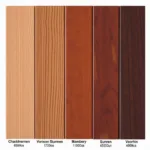Cytoplasm in plant cells is typically a clear, colorless, or translucent substance. It’s the jelly-like material that fills the cell between the cell membrane and the nucleus, housing various organelles like chloroplasts, mitochondria, and the endoplasmic reticulum. Understanding the nature of cytoplasm is crucial to grasping how plant cells function.
The appearance of cytoplasm as clear doesn’t mean it lacks components. Quite the opposite! It’s a complex solution of water, salts, proteins, enzymes, and various organic molecules essential for cellular processes. This fluid matrix facilitates movement within the cell and supports the organelles suspended within it. Think of it as the cell’s internal transportation system and structural support all rolled into one.
Unpacking the Cytoplasm’s Composition
The cytoplasm’s predominantly water-based composition is what contributes to its transparent nature. This water acts as a solvent, allowing various substances to dissolve and interact within the cytoplasm. The salts present help regulate the cell’s internal environment, maintaining a balanced pH and osmotic pressure. Proteins and enzymes within the cytoplasm are crucial for various metabolic reactions, catalyzing processes essential for cell growth and function.
The cytoplasm isn’t static; it’s constantly in motion, a phenomenon known as cytoplasmic streaming. This movement helps distribute nutrients, organelles, and other essential molecules throughout the cell, ensuring efficient functioning. You can think of it as a bustling city, with everything moving and interacting in a coordinated manner. Understanding the composition of cytoplasm reveals the intricate workings of a plant cell. What color is a nucleus within this bustling city?
Why Isn’t Cytoplasm Green?
A common misconception is that plant cell cytoplasm is green due to the presence of chloroplasts, the organelles responsible for photosynthesis. While chloroplasts are indeed found within the cytoplasm, they are distinct structures with their own membranes and internal components. what is the color of an animal cell offers a different perspective. Chloroplasts contain chlorophyll, the green pigment that captures light energy for photosynthesis, but this pigment is confined within the chloroplasts, not dispersed throughout the cytoplasm. The cytoplasm itself remains transparent. It’s like a clear glass filled with green marbles – the marbles (chloroplasts) are green, but the glass (cytoplasm) is not.
 Chloroplasts in Plant Cell Cytoplasm
Chloroplasts in Plant Cell Cytoplasm
Observing Cytoplasm Under a Microscope
Under a standard light microscope, cytoplasm appears as a translucent area within the cell. While the cell wall, nucleus, and other organelles may be clearly visible due to their distinct structures and sometimes color, the cytoplasm itself remains largely transparent. Advanced microscopy techniques, such as phase-contrast microscopy, can enhance the visibility of cytoplasmic components, allowing scientists to observe its dynamic nature and internal structures more effectively. Observing what color is an animal cell can provide a comparison.
The Importance of Cytoplasm
Cytoplasm plays a vital role in various cellular processes. It provides a medium for chemical reactions to occur, facilitates transport of molecules, and supports the cell’s structure. Cytoplasmic streaming ensures that essential nutrients and organelles are distributed throughout the cell, supporting its overall function and growth.
Conclusion
The cytoplasm in a plant cell is typically clear, colorless, or translucent, providing a vital environment for cellular processes. While it houses organelles like chloroplasts, its own composition lacks pigments and remains transparent. Understanding the nature and function of what color is cytoplasm in a plant cell is crucial for comprehending the intricate workings of plant life. Want to learn more about animal cell color? Check out this resource: what color is a animal cell.
FAQ
-
What is the main component of cytoplasm? Water makes up the majority of cytoplasm.
-
Why is cytoplasm important? It’s essential for cellular processes, transport, and structural support.
-
Does cytoplasm contain chlorophyll? No, chlorophyll is contained within chloroplasts, not the cytoplasm itself.
-
What is cytoplasmic streaming? The constant movement within the cytoplasm.
-
How does cytoplasm appear under a microscope? Typically clear and translucent.
-
What is the difference between cytoplasm in plant and animal cells? While both are generally clear, there are differences in the organelles present. For further information about animal cells, consider what color is an animal cell.
-
Why isn’t plant cell cytoplasm green despite containing chloroplasts? The green pigment chlorophyll is contained within the chloroplasts, not the cytoplasm itself.
For further exploration, consider researching the following topics: cell structure, organelle function, and plant physiology.
Need help with your next painting project? Contact Color Box Hanoi!
Phone: 0373298888
Email: [email protected]
Address: 86 Cầu Giấy, Hà Nội.
We have a 24/7 customer service team ready to assist you.
